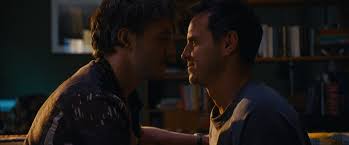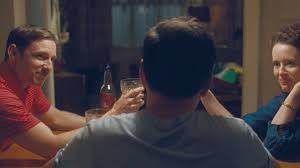In the movie “All of Us Strangers,” there is a scene where Adam, played by Andrew Scott, walks through a park at dusk and meets another man. The man points to a thicket of trees, and the audience expects something dramatic or sinister to happen. However, the scene doesn’t play out as anticipated, adding depth and complexity to the story. This twist showcases the brilliance of Andrew Haigh, the film’s writer and director, also known for his celebrated movie “45 Years.”
Adam is the movie’s protagonist. One night, he meets his mysterious neighbor, Harry (played by Paul Mescal), in their almost empty tower block in London. As they get closer, Adam becomes preoccupied with memories from his past and starts feeling the urge to revisit the suburban town where he grew up. Upon visiting his childhood home, he discovers that the house hasn’t changed. It’s exactly as he left it over 30 years ago.

“All of Us Strangers” is a riveting movie that showcases Haigh’s skill in crafting intricate narratives and creating memorable characters. Scott delivers a remarkable performance, capturing Adam’s melancholy and inner turmoil with nuance and heartfelt emotion. Paul Mescal shines as Harry, injecting the character with a charming and enigmatic presence. He perfectly balances Harry’s carefree nature with an underlying pain and longing. His chemistry with Scott is palpable. As Adam and Harry connect, the film has a dream-like quality that blurs the lines between reality and fantasy.

Then, Haigh and the Universe give Adam a gift. At dusk, the man in the park is his father, beckoning him to his boyhood home where his mother awaits him. The stunning performances of Claire Foy and Jamie Bell as mom and dad give authenticity and depth to these scenes, highlighting the supernatural and fantastical elements of the story. They are somehow alive, somehow living in the same house, and somehow looking the same as they did nearly thirty years ago before they died in a car crash when Adam was 12 years old. It gives Adam, who is now entering middle age (about the same age as they were before they died), a chance to have the conversations he never could about his life, about his being gay and about his possible new boyfriend.

His parents are not angry about his being gay, but they are not all 2023 either. Their vantage point – mainly the mother’s – is 1985, when things were much different for a gay man, and AIDS was the number one headline. They are worried for him. One night, Adam couldn’t sleep, so he popped into bed with his mom and dad wearing his old pajamas, which were now too small. It’s a funny scene. However, Haigh manages to keep the general mood on track as Adam and his mother have a heartbreaking conversation about his life without her and how he imagined it would be if she were still alive.
The movie’s final scene may disappoint some viewers, and whether the director went too far in one direction in these last few minutes will always be open to debate. However, nothing here detracts from the brilliance that came before. You get out of the movie what you put into it, and no matter the circumstances, you come away knowing you have seen a masterpiece.
https://thebrownees.net/essay-one-1-2-65-queer-films-under-the-hays-code-1934-1967/
65 Queer Films Made Under the Hays Code (1934-1967) Part One. – TheBrownees
65 Queer Films Made Under the Hays Code (1934-1967). Part Two. – TheBrownees
65 Queer Films Made Under the Hays Code (Table) – TheBrownees
45 Queer Films from 1967-1976: Queer Cinema Comes Out – TheBrownees


















